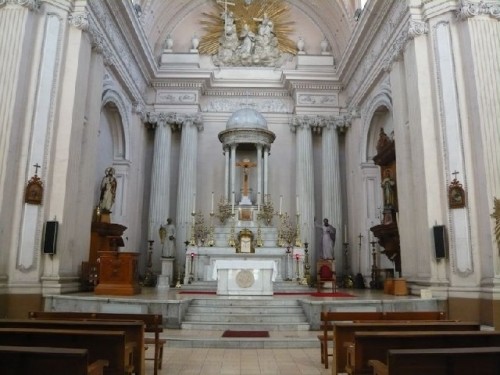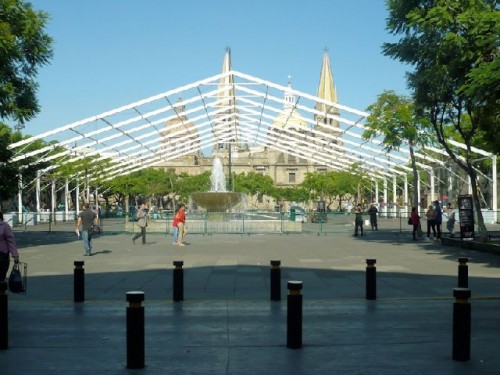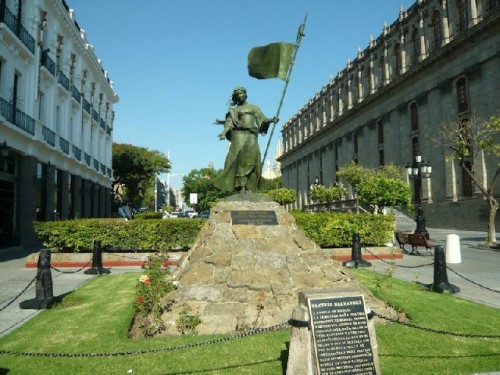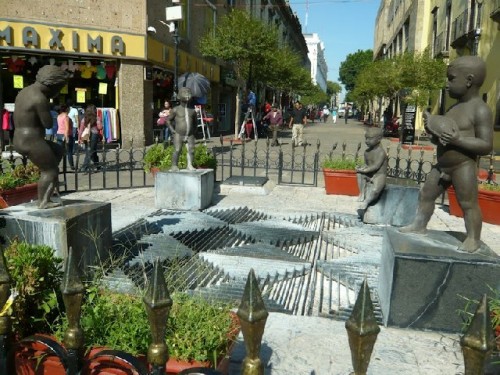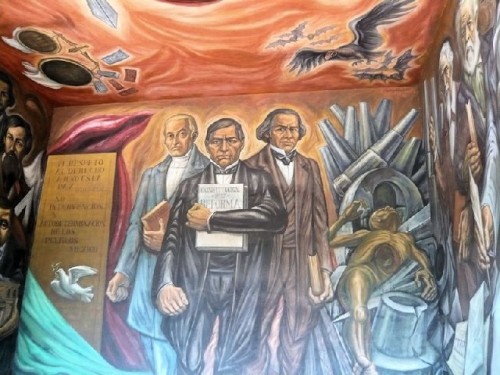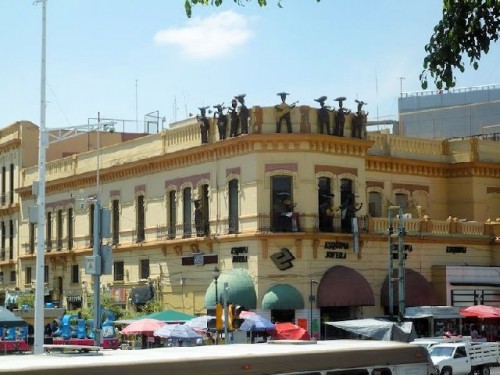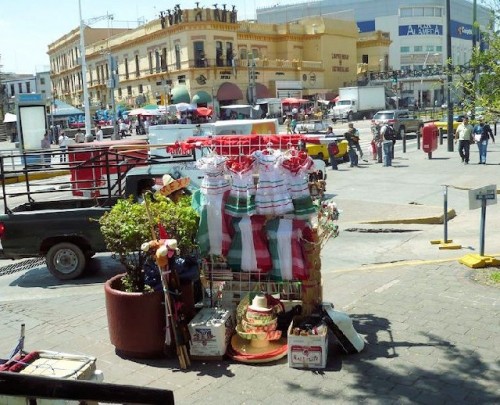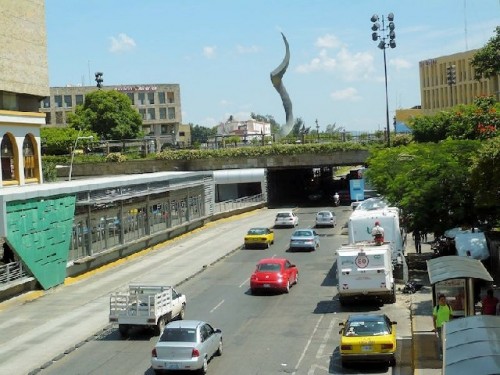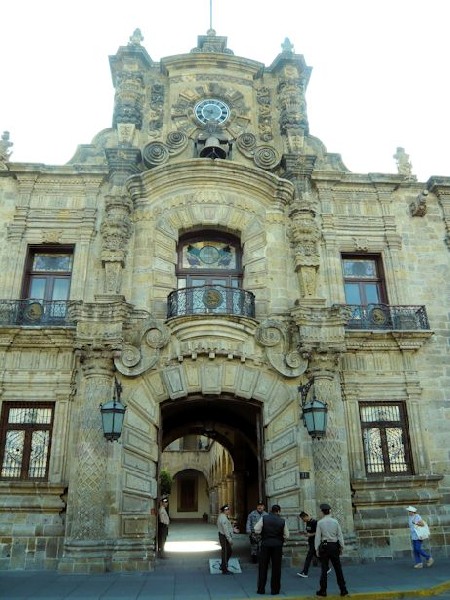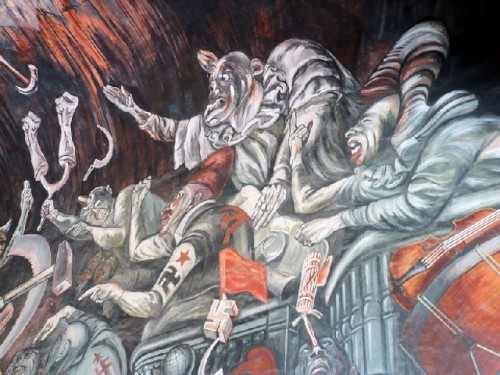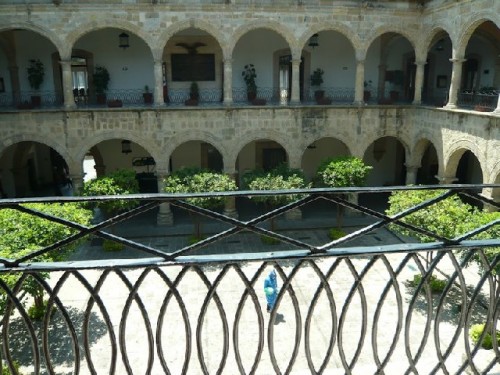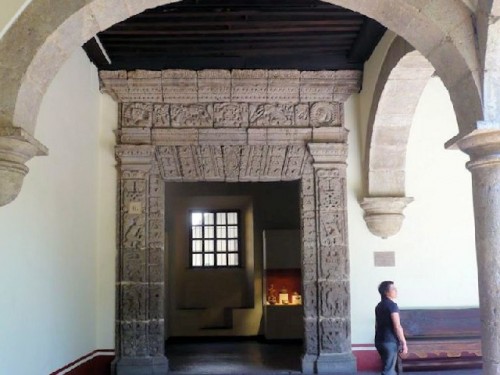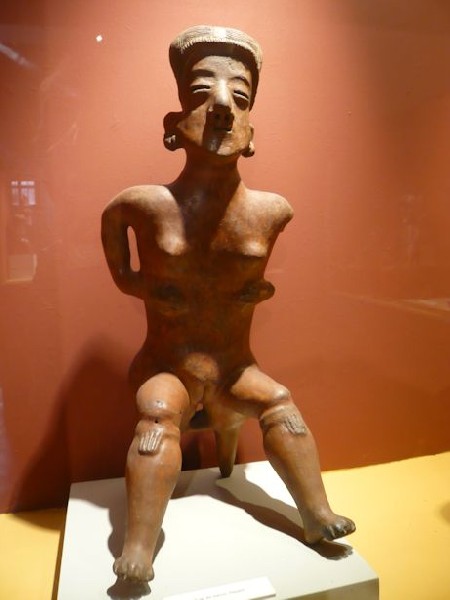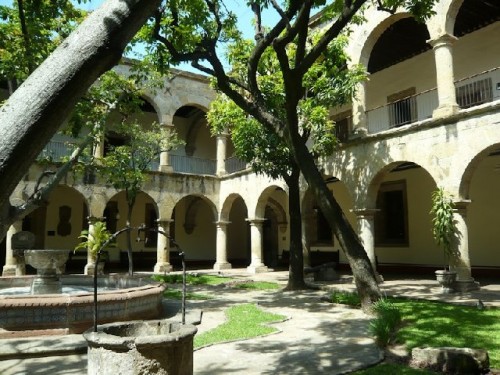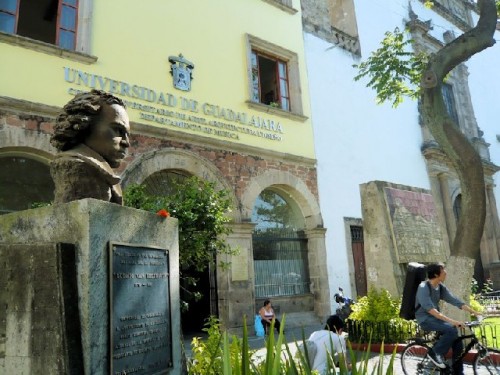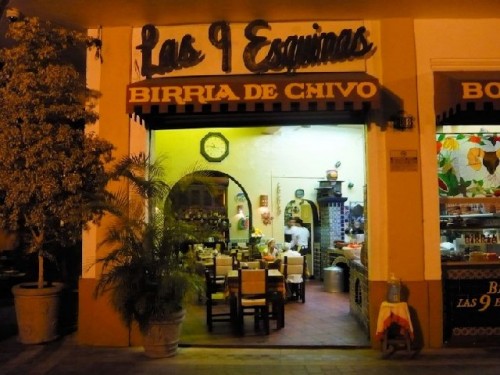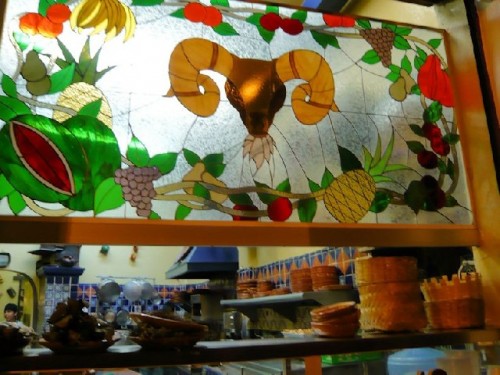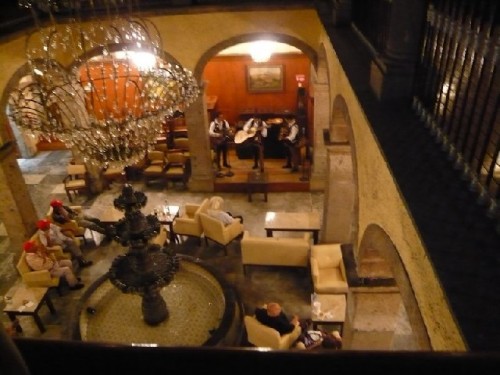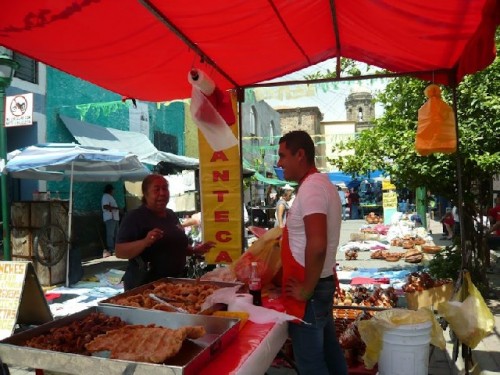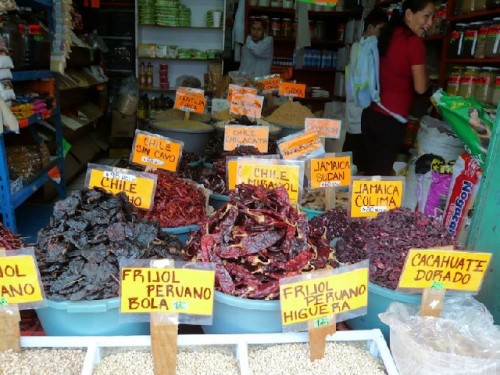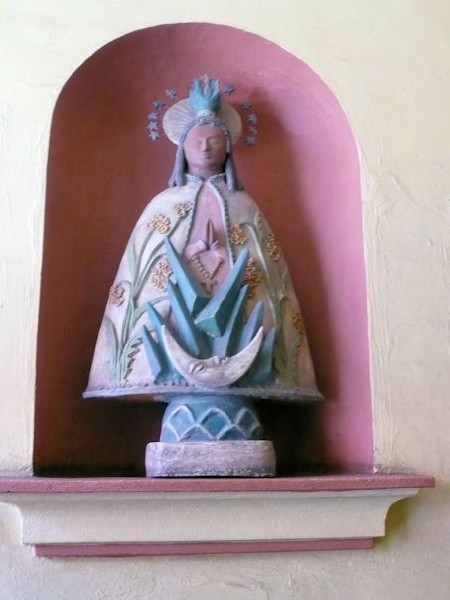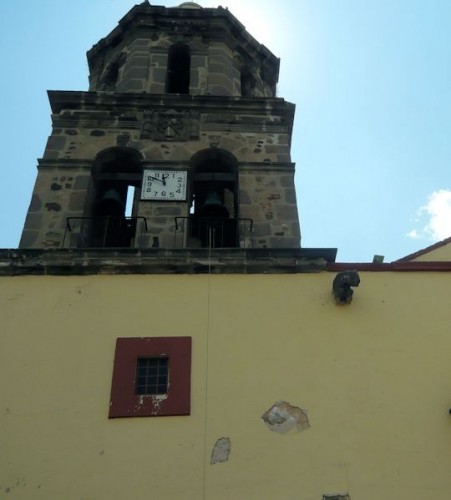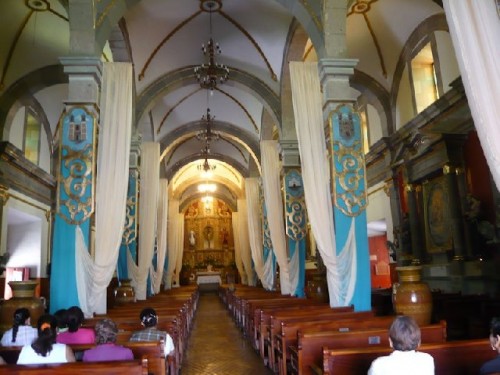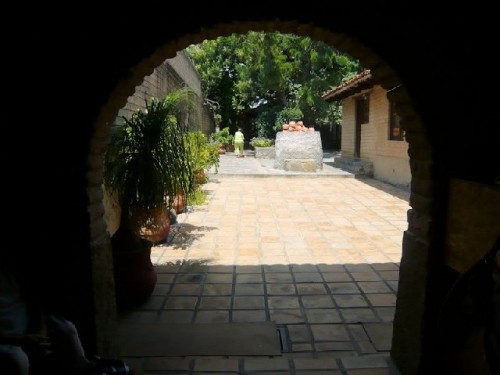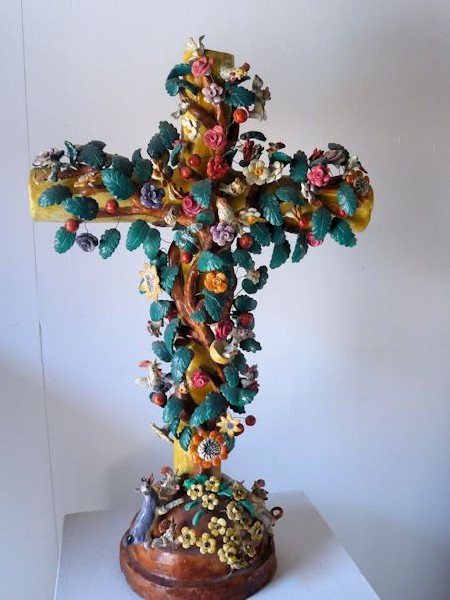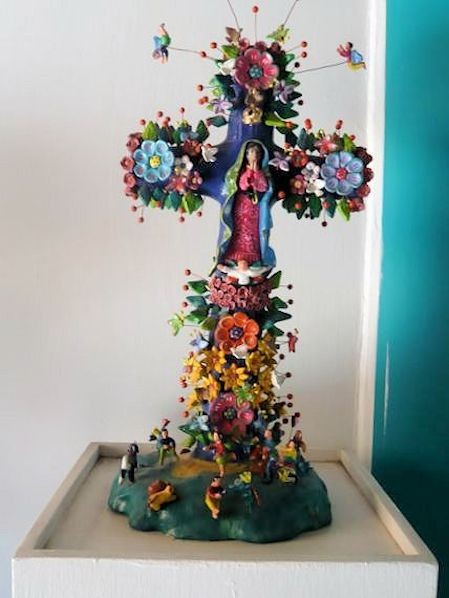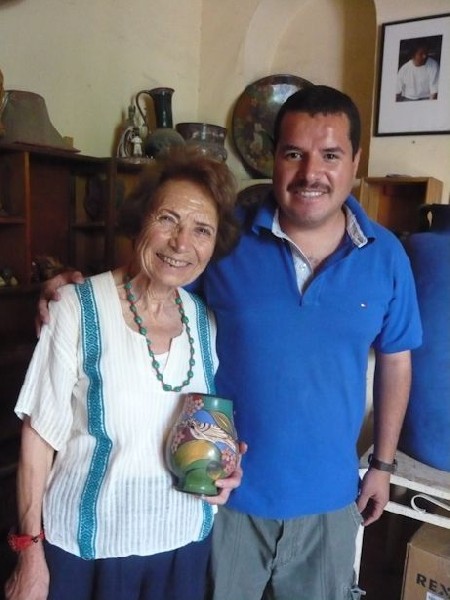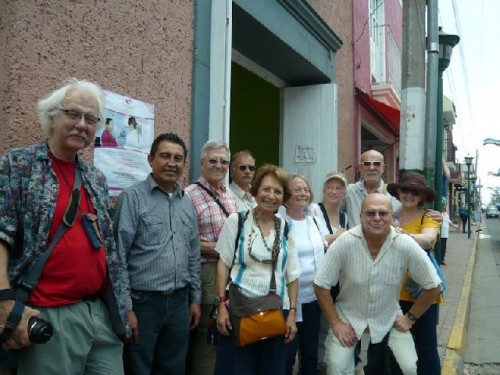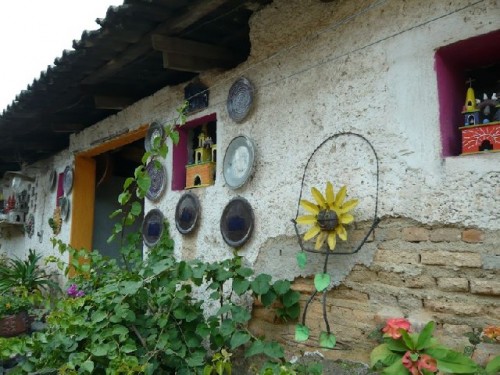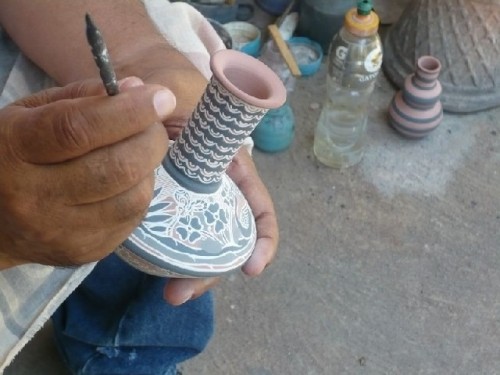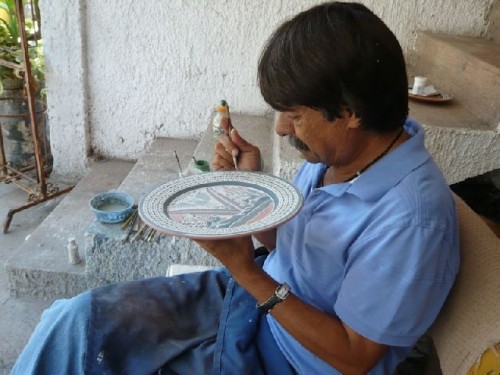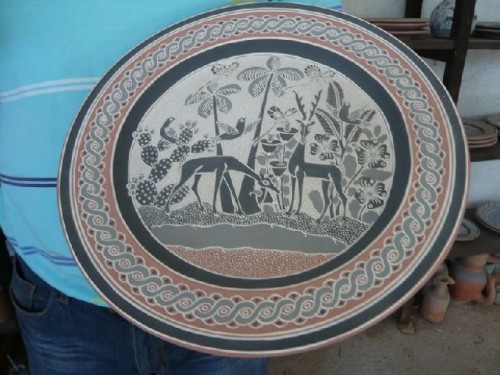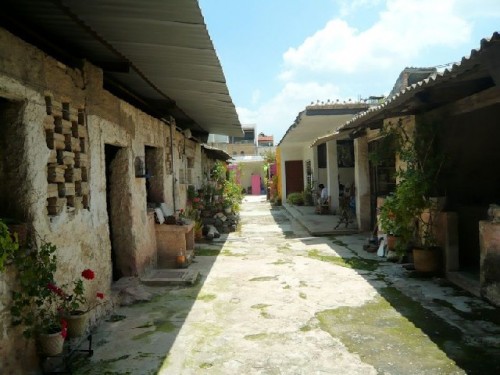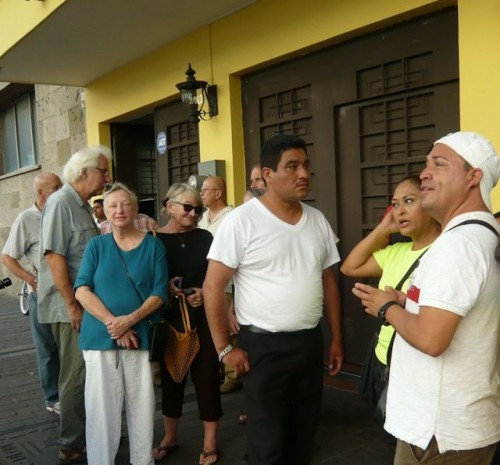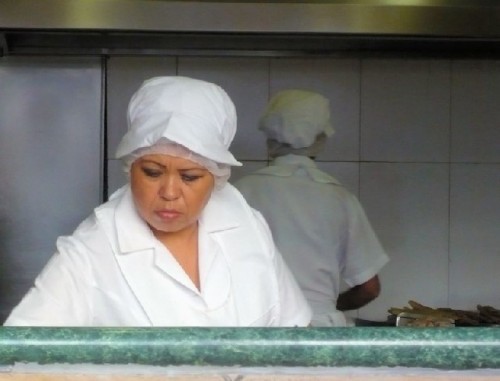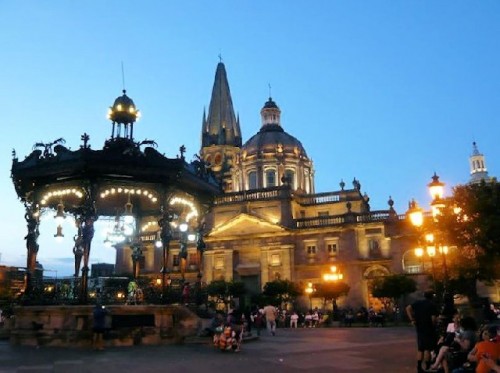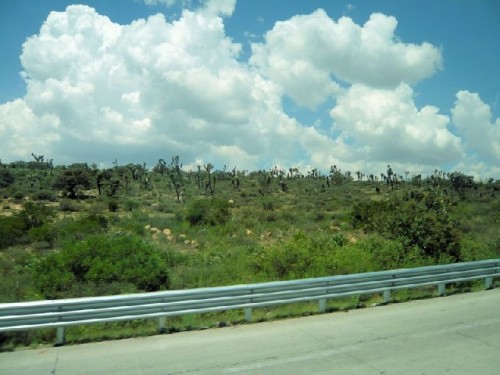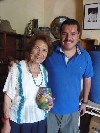Guadalajara
Mexico's Most Livable City
By: Zeren Earls - Oct 23, 2014
Having fond memories of trips to Guadalajara, Mexico City, Oaxaca, Saint Cristobal, and Yucatan in the 80s with my late husband, I accepted an invitation to join a group of artisans on a trip to Central Mexico in late August. The proposed itinerary included the states of Jalisco and Zacatecas, a region new to me.
From Boston I flew to Guadalajara via Atlanta; the latter leg was a four-hour trip with a time adjustment of one hour behind upon landing. Following fairly quick security and customs clearance, I was glad to see a booth for a pre-paid cab ride, which delivered me to the Frances Hotel in the historic center at 8:30 pm local time, ending my eight-hour journey from home.
Stepping into the lobby of the Frances Hotel was the beginning of another journey — this one back in time. Built in 1610 as an inn to accommodate merchants crossing the state, the colonial building with its wood-shuttered windows and three-storied interior courtyard still retained the original tile floor. An enormous chandelier suspended from the painted-glass ceiling and hovering over a central fountain surrounded by period furniture enhanced the old-world charm of the building, a designated national monument for the state of Jalisco. Exhausted and despite the inviting lobby featuring a lively mariachi trio, I headed to my room and dropped instantly off to sleep.
Breakfast the next morning consisted of an array of cooked vegetables and meats, some appearing to feature hot peppers. I settled for an omelet, delaying a sampling of the Mexican dishes until I felt fully acclimated to my new environment. While waiting for the arrival of my travel-mates, who were still on the road due to an overnight flight from Los Angeles, I decided to explore the historic core of the city nearby.
The Metropolitan Cathedral, with its symbolic towers and eclectic architectural details — baroque, Gothic, Moorish and neoclassical — added over the centuries, sits at La Cruz de Plazas, a crossroad of four plazas considered the heart of the city. In front, Plaza Guadalajara features a large fountain, cafes, and underground shops. To the right, the Rotonda de los Jaliscienses Ilustres honors the contributions of Jalisco’s notable figures in the arts, sciences, and humanities; to the left is Plaza de Armas with an art nouveau French bandstand; to the rear is Plaza de la Liberación with fountains and flowering trees.
My walk started at the Cathedral, the interior of which features arched ceilings, an impressive pipe organ, and the crypts of the archbishops downstairs. Attracted by the crowds around the ornate bandstand, I ambled on to Plaza de Armas, where a group of senior citizens with pompoms in hand were doing morning exercises instructed by a teacher. The bandstand is home to the municipal and state bands on Tuesdays, Thursdays, and Sundays.
Continuing on to the next crowded place, I arrived at the Teatro Degollado, a beautiful neoclassical building and home to the Jalisco Philharmonic Orchestra. There were long lines of people dressed for a special occasion and waiting to get in. With my press pass I was allowed in for five minutes to an invitation-only private function by the mayor, promising to take no pictures beyond the lobby. Through the ornate marble columns of the lobby, I entered a lavish performance hall consisting of four rows of glittering loges above the orchestra seats. The painted ceiling depicted tales with classical characters in togas. Admiring bountiful buffet tables set in the lobby for the reception, I exited the building.
Meanwhile my group had arrived and was already on the way to the Palace of Justice to see its famed murals when I ran into them on the street. The Palace of Justice, built 400 years ago as a hospital, has functioned as a convent and school, and has been the headquarters of the Judicial Power of the State since 1952. The building, a mixture of Arabic and Spanish style architecture, has a decorative dark stone facade and a central patio enveloped by a two-storied colonnaded arcade with wide corridors. Surrounding the staircase is a mural entitled “Constitution and Reformation”; it decorates the walls and ceiling with topics relating to judicial development in Mexico, depicting native heroes overcoming obstacles and a martyr, surrounded by weapons, representing the people. A dove of peace appears along with the principles of Mexican policy.
A visit to the Mercado Libertad, with 3000 stalls on three levels, was a jostling experience as we moved through crowds shopping for fruit and vegetables, jewelry, leather, apparel, electronics, medicinal herbs, handicrafts, and much more. It is a busy place where it is hard to find something authentic, as many goods are imported.
The Palacio de Gobierno is an ornate 19th-century building, where Miguel Hidalgo abolished slavery. The stairwell houses Jose Clemente Orozco’s powerful liberation mural, “The Forces of Evil”. The old Congressional Chamber and the Ambassadors Salon open onto an attractive inner courtyard lined with trees.
The Regional Museum is dedicated to the paleontological heritage of Jalisco and is famous for a skeleton of the Mammoth of Catarina, discovered 50 years ago in a pit during a search for water for irrigation. The bones have been collected and reconstructed by a sculptor. It is believed that the large animals in the region became extinct due to climate change, which caused shortages of food. In addition to fossils, the museum has glass cases with ceramic objects found around the state.
In the evening we had dinner at Las 9 Esquinas, famous for its birria, Guadalajara’s savory goat stew, which is simmered in maguey leaves and served with hot tortillas, a squeeze of lime, onions, and a spicy salsa. Seated at outdoor tables by the blue-tiled Mexican kitchen, we enjoyed our stew as we watched passers-by. Walking back to the hotel, stores began closing by 9 pm; streets got dark, and all became quiet as the lively mariachi band in the lobby filled the void.
In the morning we journeyed to Tonalá, a 30-minute ride to one of Mexico’s important artisan centers. Leaving before breakfast, we wandered through the market as vendors set up and were finally directed to El Rincón del Sol, a Mexican kitchen and gallery with wall niches displaying ceramic works. A fruit plate and a mushroom omelet with tortillas, accompanied by fresh orange juice, replenished me for the rest of the day.
Tonalá has several historic churches — the Chapel of the White Cross, the Shrine of the Sacred Heart, and the Santiago Apostol Parish, which was the only one I was able to visit, since the primary focus of our daily excursion was to see crafts. Built from the late 16th to the late 18th century, the building shows different architectural styles — colonial, neoclassical, and baroque. The neoclassical interior has three naves with columns crowned by cross vaults.
The Tonallán Regional Museum, located in a rustic adobe building, was a treat with its special room dedicated to crosses, realized in various styles of popular art. These ranged from simple to elaborate, featuring motifs of birds, flowers, and the like. In addition, the displays include pre- Hispanic pottery and masks typical of the region. From here one of the museum attendants accompanied us to our first of three artist studios.
The technique of burnished clay was a new learning experience. Angel Ortiz Gabriel, a fourth generation young master of this tradition, which dates back to pre-Hispanic times, runs the studio with his family. The pots, also known as “aromatic pots” because of the fragrance they give to water, are distinguished by their floral and decorative designs, depicting animals and recurrent pre-Hispanic borders incorporated into the work.
Each piece, crafted by hand, begins with a selection of clay, which is molded and left in the dark for couple of days. It is then left in the sun until dry and “polished” using river stones and water, following which the background is painted, decorated, and outlined. Afterwards it is burnished with pyrite, a metal named for its characteristic brilliance, and finally fired.
Totally charmed by the beauty of the objects, I broke my promise not to return home with any crafts and bought a vase, signed by Angel Ortiz Gabriel, which was also an opportunity to have my picture taken with the artist. Bidding goodbye to Angel and his proud father, Don Gabriel, who passed the tradition on to his son, we departed for the next studio.
Our second studio visit presented yet another ceramic technique, where artists incise a design on a painted pottery surface using sharp rattan tools. The painstaking process requires precision and results in intricate and beautiful ornamentation. We watched artists at different stages of working with the tools, and admired the finished products for sale in the shop. Although exquisite, the objects were pricy. A single coffee mug was priced at $150.
Our third visit was to a metal workshop. When we arrived at the door, we were advised not to go in because of the fumes generated inside. Calling it a full day, we returned to Guadalajara.
Dinner was at a popular restaurant named Chata, where the making of tortillas could be viewed from the street. We joined a long line of locals waiting to get in. In about twenty minutes I was able to order a combination plate consisting of chicken mole, refried beans, rice, and chilleneros and horchata drink, spiced rice milk served over ice — a new yet delicious taste.
In the morning we had an early start to get to the bus station for our trip north to Zacatecas. Expecting to see passengers with chickens and goats like 25 years before, I was pleasantly surprised to arrive at a spacious and orderly bus station. The ENT bus line exceeded my expectations, with reserved reclining seats and foot rests; our bags were checked with an attendant; a lunch bag with a ham and cheese sandwich and crispy crème, along with bottled water or a choice of soft drink was handed out as we boarded. The comfortable five-hour ride on a paved road took us by low hills covered with scrubby greens and cacti. As we approached Zacatecas, the capital of the eponymous state, high mountains emerged in the distance, cradling the city 8000 feet above sea level.
(To be continued)



